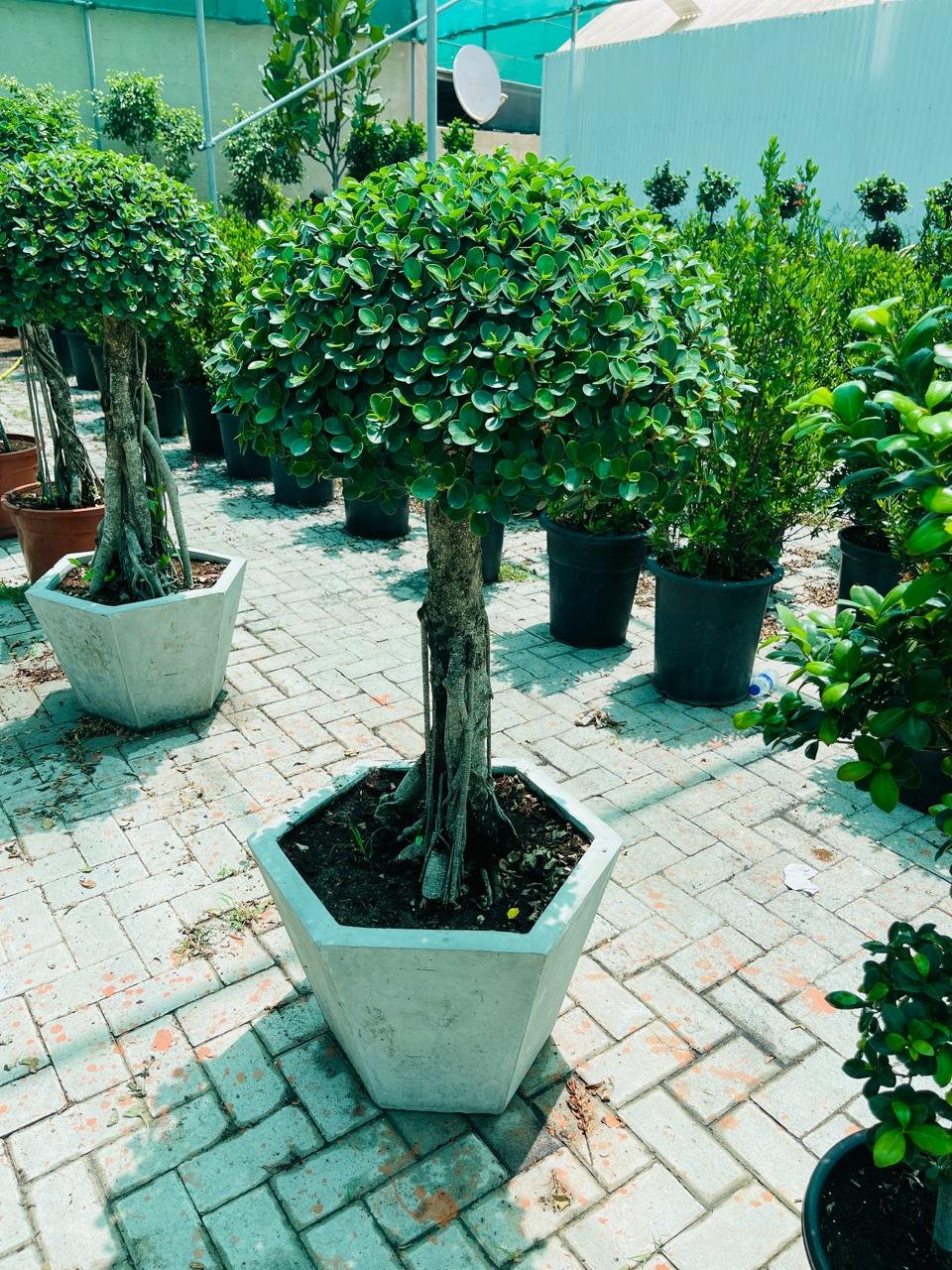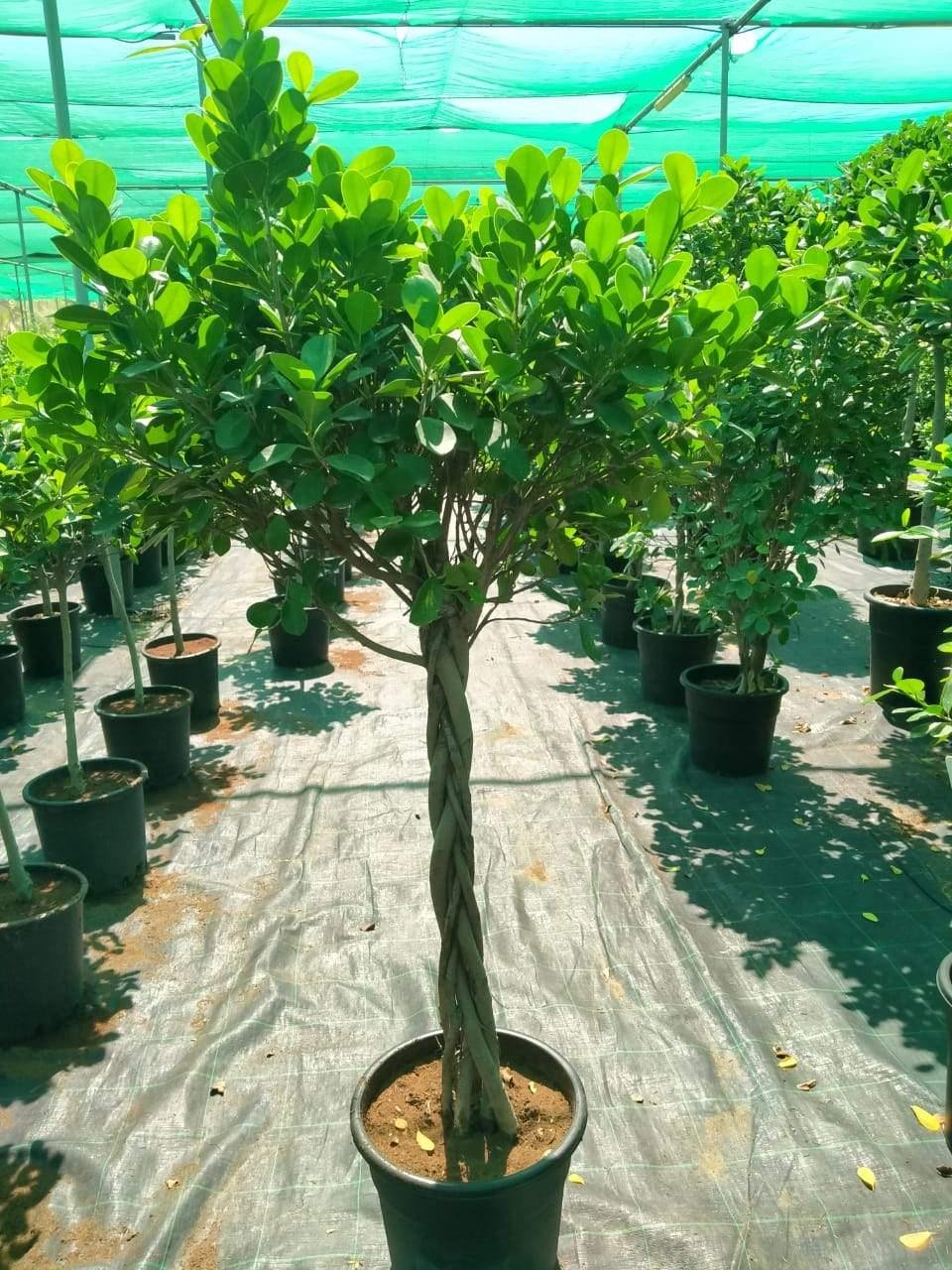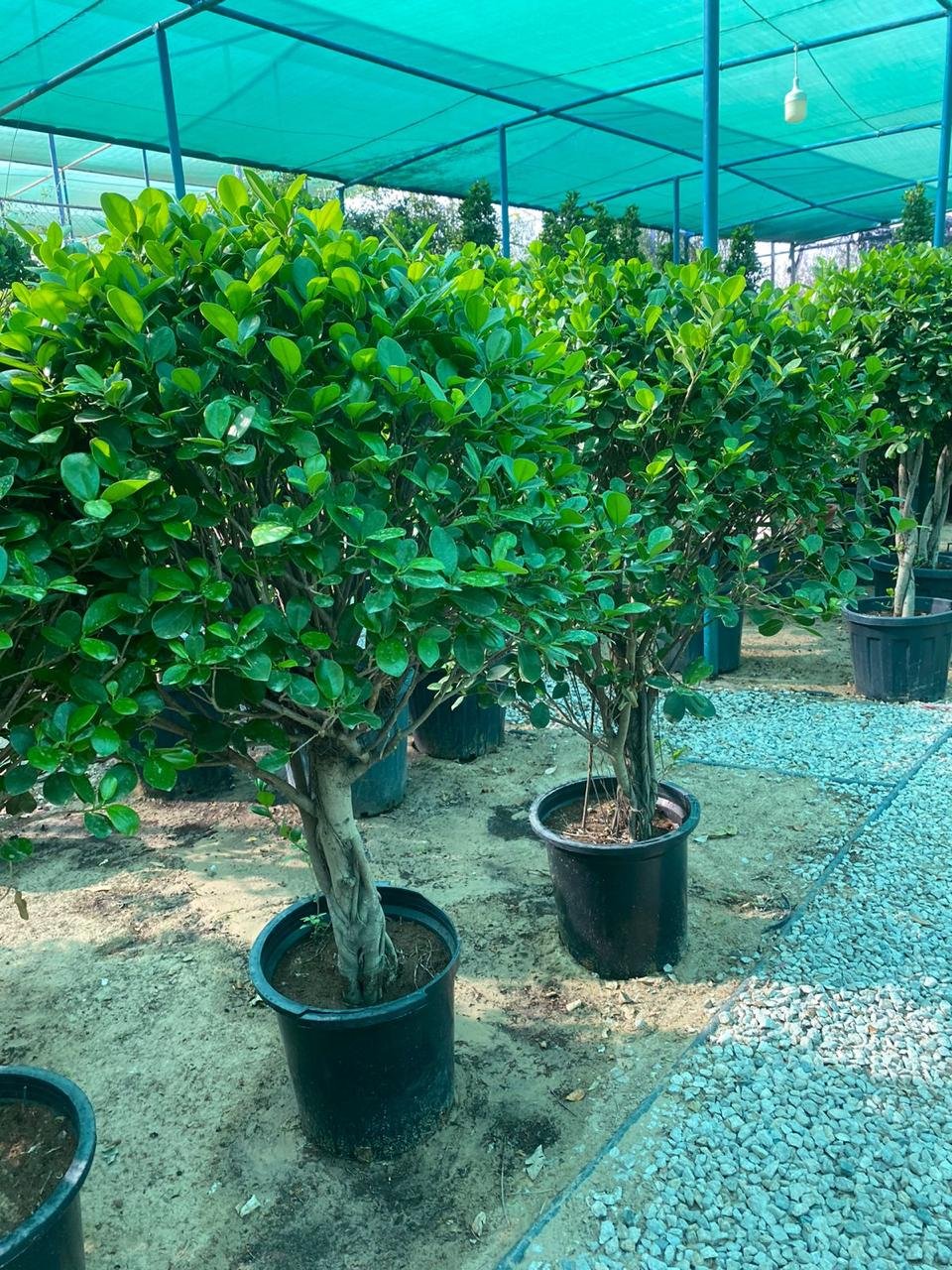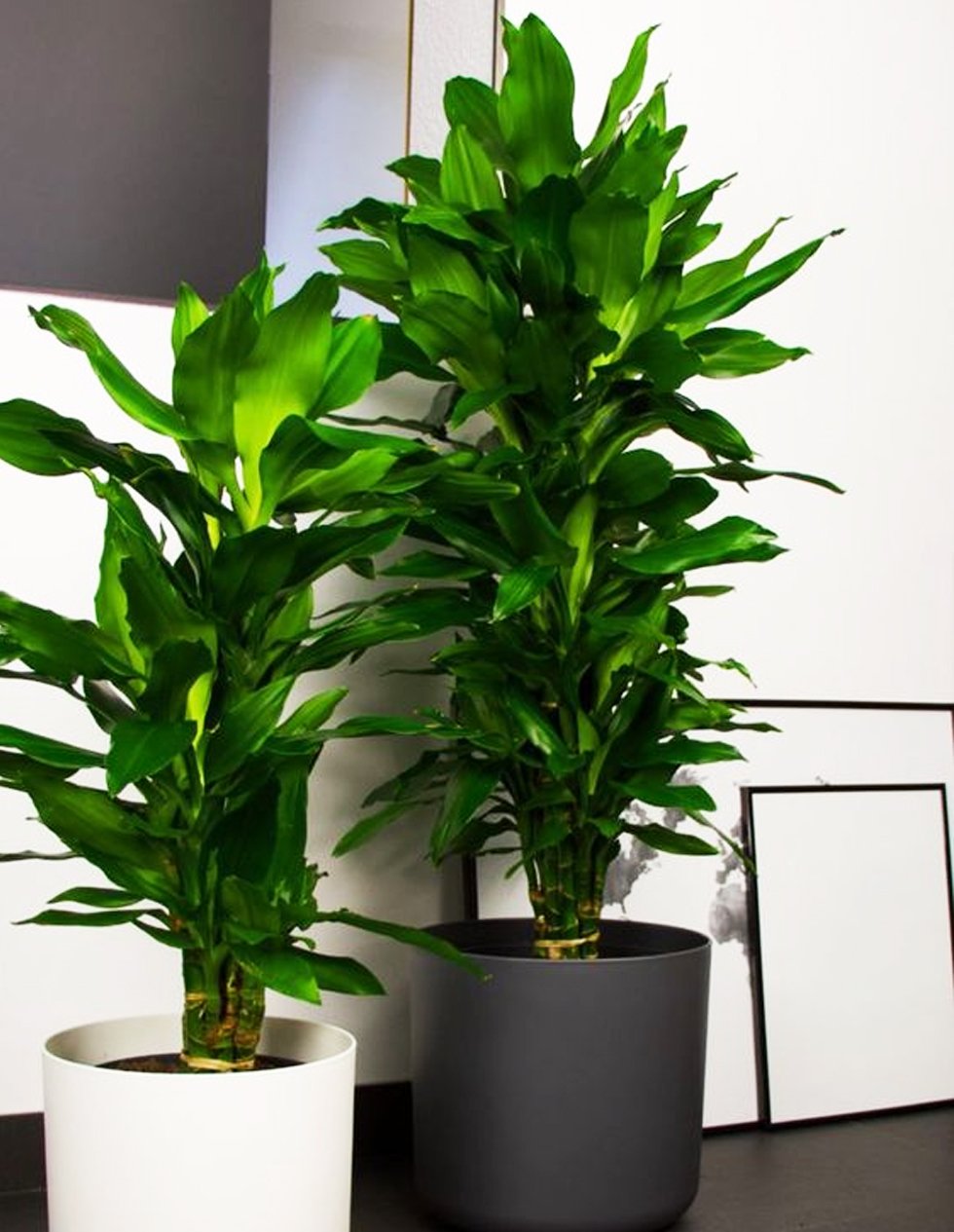Description
Ficus Panda – Single Head (Ficus microcarpa ‘Panda’)
Ficus Panda is known for its thick, leathery leaves, which are oval-shaped, shiny, and deep green. These features give it a lush and healthy appearance year-round. The single-head version typically stands on a clear, sturdy trunk with a neatly pruned canopy, making it look like a miniature tree. It can be maintained at various heights, depending on its use—commonly between 1 to 2.5 meters when used as a potted or garden specimen.
Light and Placement
Ficus Panda thrives best in bright, indirect sunlight. While it tolerates partial shade, full sun encourages denser foliage and more compact growth. In very hot climates, some afternoon shade is beneficial, especially for young or newly planted specimens. It’s commonly planted in gardens, along walkways, or in large decorative pots for patios, balconies, or office entrances.
Soil and Watering
This plant prefers well-draining soil, such as a mix of garden soil and organic compost. Watering should be moderate—keep the soil moist but not soggy. Allow the top inch of soil to dry out before watering again. Overwatering can lead to root rot, while underwatering may cause leaf drop. When planted in the ground, it becomes more drought-tolerant once established.
Pruning and Maintenance
One of the biggest advantages of the Ficus Panda single-head variety is its low maintenance. Occasional pruning helps maintain its spherical shape and encourages new growth. Its compact structure also makes it easy to shape into topiary forms, which is why it’s widely used in formal landscaping and garden design.
Uses and Benefits
Ficus Panda is used extensively in landscaping, bonsai, and indoor decorative settings due to its attractive appearance and adaptability. It is also valued for its ability to tolerate trimming and shaping. While not primarily grown for air purification, like some other Ficus species, it does contribute to a greener, healthier environment.























Reviews
There are no reviews yet.